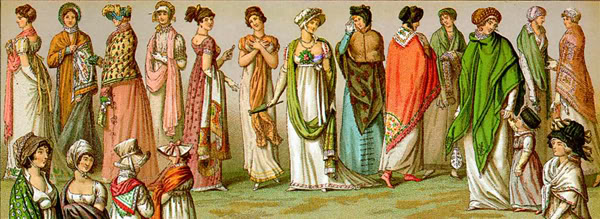Gentlemen's Clubs of St. James in London
In Mark Rowland's London Rambles, Mr. Rowland offers an excellent analysis of the popularity of St. James for gentlemen's clubs.
At its heydey in the Victorian era, St. James boasted 250 clubs cheek-by-jowl; 50 remain to this day. Click HERE for a geographical location with year of opening listing for every club.
The White's, Brooks's, and Boodle's of Regency romances fame are still in existence today. White's is older (established in 1693), while Boodle's and Brooks's were established in the 1760s. Though White's in romance novels is usually an aristcratic and political club, Mr. Rowland puts it squarely in the social category, but puts Brooks's and Boodle's in the aristocratic and political category. In romance novels, Brooks's and especially Boodle's are portrayed as clubs for the younger, brasher group with a wilder reputation for gaming and drinking, whereas White's is for the more serious, politically and/or socially influential aristocrats. So it is interesting to read this disconnect between Mr. Rowland's research and the research of romance novelists.
The mention of Almack's in this list of gentlemen's clubs, even under the 'social' category is clearly a misnomer. It was an assembly hall for ton dances and run and championed by high society ladies.
So why St. James? Why did it become this hugely popular site for gentleman's clubs? Here are some of the reasons according to Mr. Rowland:
"They needed to be close to the seats of royal, governmental and military power in the heart of Westminster. Settling just to the north of those also made practical sense for ease of access to the legal 'illage' at the Inns of Court off the Strand and Fleet Street, the financiers of the City, and the prime residential districts of Mayfair and Belgravia to the north and west respectively."
For the historical context behind the explosion of clubs during the Victorian era, Mr. Rowland details the wars, the industrial revolution, empire building, the mechanization of a previously agricultural feudal society, etc. historical events as the reasons.
Do read the article in its entirety.
An aside: Current notable members of White's.
----
[Edited 3/9/13 to add: I stand corrected about Almack's. It was initially a women's and gentlemen's social club—a rare club that admitted women. It was much later in its reign during the Georgian era that it was taken over by the women and became a dance assembly hall. However, it continued to boast one of the most popular cards' room mostly for men.]




 In January 2010, I was challenged by Melissa Klug, director of marketing for Glatfelter book paper manufacturers, to take up the
In January 2010, I was challenged by Melissa Klug, director of marketing for Glatfelter book paper manufacturers, to take up the 
